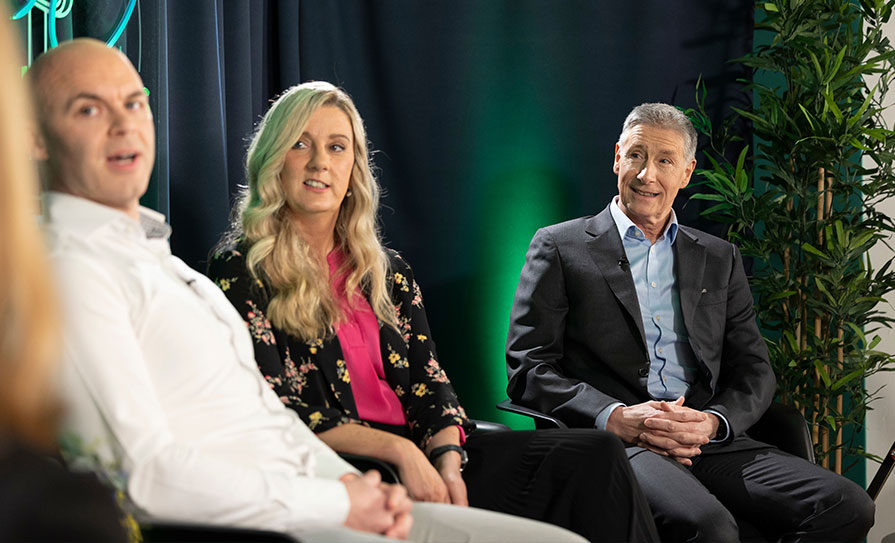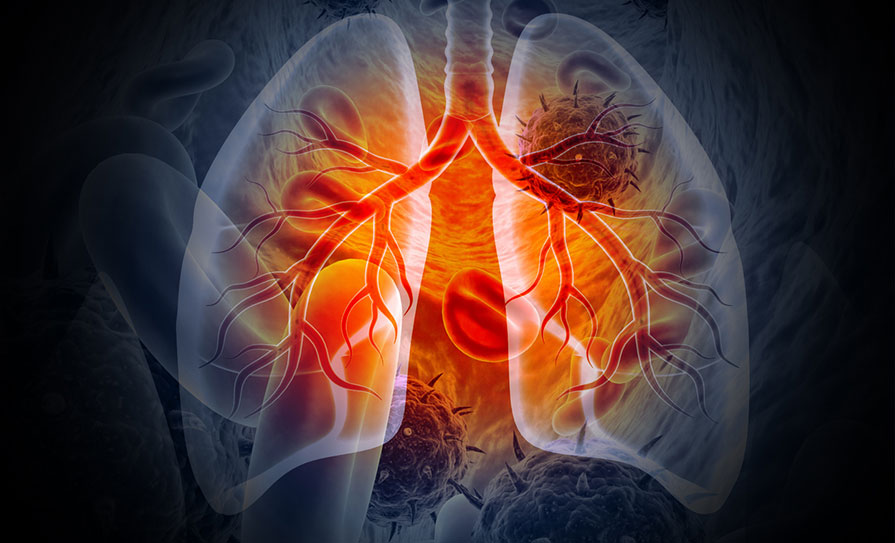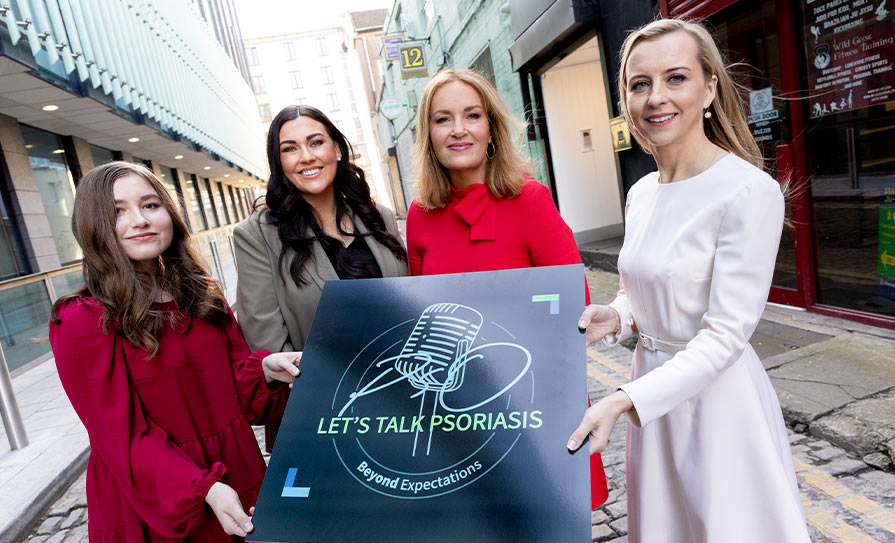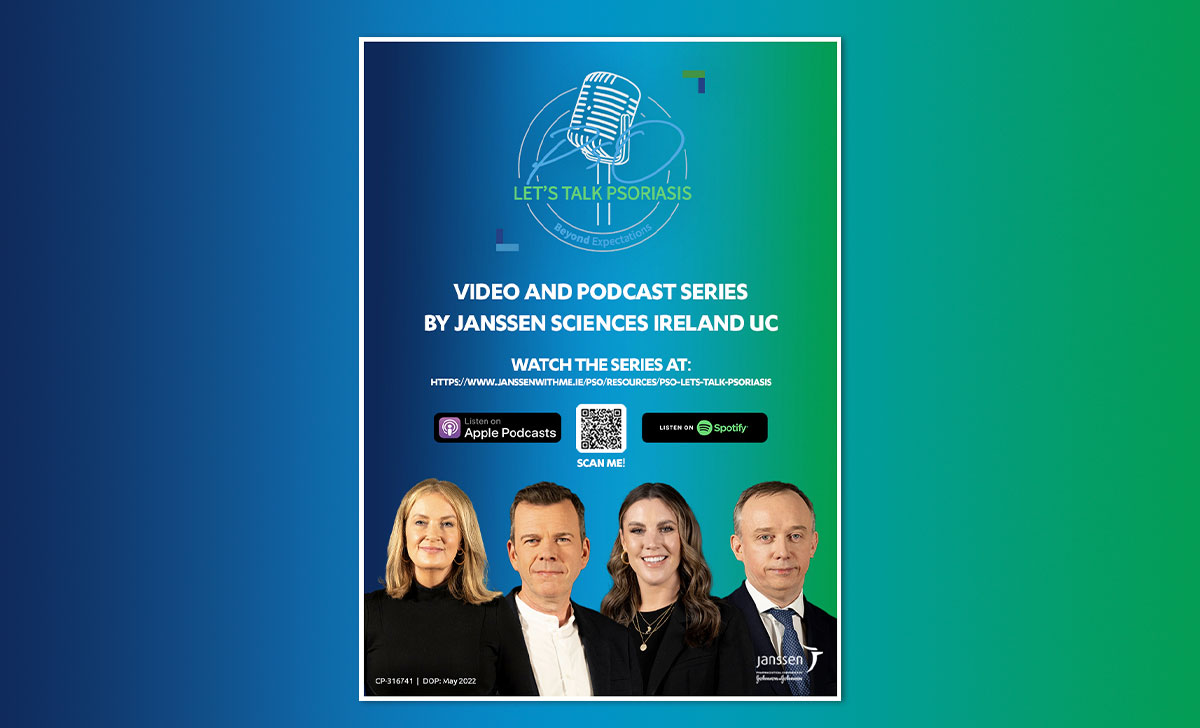Psoriatic arthritis is a form of inflammatory arthritis that can affect up to 30 per cent of people with the chronic skin condition, psoriasis, causing swollen painful joints as well as the skin manifestations of the disease. Despite this, awareness of psoriatic arthritis remains relatively low, meaning diagnosis can often be delayed and patients can be left in the dark.
That is what the fourth episode of PsO Let’s Talk Psoriasis aims to address. The video and podcast series from Janssen Sciences Ireland UC is the first series of its kind designed to bridge the gap in support for people living with psoriasis and psoriatic arthritis, by providing access to expert guidance from leading Irish dermatologists and rheumatologists during the often prolonged waiting times to access specialist care. And as psoriatic arthritis can be a consequence of uncontrolled psoriasis, this episode is essential listening for anyone with either condition. Topics covered include how to manage psoriatic arthritis, including what exactly psoriatic arthritis is, how it can be treated and managed, and the types of supports that are available for patients.
Despite the low level of disease awareness, about 30,000 people in Ireland may be living with psoriatic arthritis, which is a rarer form of arthritis, according to Prof Doug Veale, who is Consultant Rheumatologist at St Vincent’s University Hospital and Professor of Medicine at University College Dublin.
Although psoriatic arthritis typically occurs after psoriasis develops, in some cases the arthritis may develop first. Psoriatic arthritis usually begins slowly, spreading to other joints over a period of a few weeks or even months, but in rare instances it can develop quickly and can be quite severe.
Psoriatic arthritis can present in many different ways and is highly individual, with one patient often experiencing a very different set of symptoms to the next patient, Prof Veale explains. “It is not just arthritis, because it obviously affects the skin, but also affects the nails, it can affect the areas where the muscles and the tendons actually attach to the joints, areas like the Achilles tendon. These areas can become very inflamed and then the fingers and the toes can also become inflamed. So, it has lots of different presentations, which adds to the complexity of the disease and also why sometimes patients are reluctant to attend a doctor or even maybe will attend the wrong type of specialist and therefore the diagnosis doesn’t get made because all of these areas don’t seem to be clicked together,” he explains in the episode.
Grainne O’Leary, Chief Executive of Arthritis Ireland, agrees, saying the patient must hope that their healthcare professional will “join the dots” on their particular set of symptoms, which may also include “overwhelming fatigue”.
“We find it can be quite a very different experience to, for example, rheumatoid arthritis, which will be more common and probably people may have a bit more of an understanding of what that is. Generally [with psoriatic arthritis] people are having different symptoms and pain in different parts of the body. But when people hear the word arthritis, they think of joint problems, and they think of pain as the number one symptom.” Yet fatigue may be the symptom that’s most difficult to manage, she says. “Your daily activities of living can just come to a halt and can just be really, really difficult to undertake.”
Like with psoriasis, people with psoriatic arthritis can experience episodic flares, where these symptoms of the condition get much worse for a period of time, Prof Veale explains in the episode.
“When you’re having a flare, essentially what we mean is that the disease is active, and there’s inflammation… your immune system is activated and it’s actually affecting your whole body. The fatigue is a feature, the stiffness is a feature. And you can see the increase in pain in the joints and lack of sleep and all of these other factors, which are sort of secondary, in a sense, to the inflammation.”
During these flares, Prof Veale advises patients to reduce the amount of exercise they might normally do and rest more. And while some people are reluctant to take painkillers, these are very effective in helping to manage the pain and discomfort associated with a flare.
“You should rest if your joints are inflamed, certainly weight-bearing exercise, such as walking or running, is not to be advised during a flare. People are very reluctant to take painkillers a lot of the time…. But if you have pain, we say take the painkiller, take an anti-inflammatory if you need it,” he says. “Thankfully, the medications we have for controlling the disease and reducing flares are really much, much better now than they were 20 years ago.”
Ms O’Leary agrees, saying pain medication is part of any treatment plan for arthritis. “If you get on top of pain, before it gets too bad, you’ll have a better outcome and be able to resume your normal activities, whereas it can be harder to get on top of pain when it gets really bad.”
As psoriatic arthritis can be a consequence of psoriasis in some cases, Prof Veale emphasises the need for tight control of both conditions, explaining that damage can accrue in the joints if the disease goes untreated for too long.
“In most cases, the psoriasis will be present before the arthritis and people will start with topical treatments, such as creams and lotions and potions. And then there’s tablet treatments, which have been around for a long time, and some of them are very effective for some people.” Many of those with psoriatic arthritis will require treatment with one of the biologic therapies, however. These have been “a game changer” over the past two decades, Prof Veale says.
“Essentially, they have changed so that they both control the inflammation and reduce a lot of the symptoms, but importantly, they also prevent damage to the joints. And as a rheumatologist, we’re always really looking at that sort of prevention of future damage. So, we do still tend to start with the tablet treatments first and then move on to the injections. But occasionally, in very severe cases, we might combine the tablets and the injections at the same time from the beginning, particularly in a younger person to try and prevent that damage.”
However, Prof Veale admits that one of the challenges is identifying the patients who are at most risk of their disease progressing. “If we can identify those people at a really early stage, then we can say these are the patients who really do need early intervention with the injectable treatments and they don’t need to delay in trying other treatments.”
Yet there are also non-pharmacological approaches to dealing with and managing arthritis and these will complement any medication regimen. Arthritis Ireland has helped to pioneer self-management in chronic diseases with its popular “Living Well with Arthritis” self-management programme. In the episode, Ms O’Leary offers a number of tips for those seeking to gain control of their psoriatic arthritis and enhance the benefit of their particular treatment. “There’s two things, one is exercise and the other is weight management, and they go hand in hand,” Ms O’Leary notes.
Understandably, patients in pain and discomfort may not feel like exercising, she admits. “Also, it almost feels like the wrong thing to do, because you feel maybe exercise is going to cause more pain.” She advises patients to consult with their GP or even a chartered physiotherapist if they are beginning an exercise regime for the first time, while Prof Veale suggests non weight bearing exercise, such as swimming or aqua aerobics. This should be coupled with a healthy, well-balanced diet.
But while the focus tends to be on the physical manifestations of psoriatic arthritis, such as pain and immobility, this is a disease that also impacts a person at an emotional level, Ms O’Leary emphasises, saying the mental health implications must not be forgotten. “They’re often the things that people can really struggle with, it does bring change into a person’s life, and not only into that individual’s life, but to their loved ones too.”
PsO Let’s Talk Psoriasis is available free of charge online at www.janssenwithme.ie/ pso/resources/pso-lets-talk-psoriasis. The podcast audio versions are also available wherever you access your podcasts.












Leave a Reply
You must be logged in to post a comment.